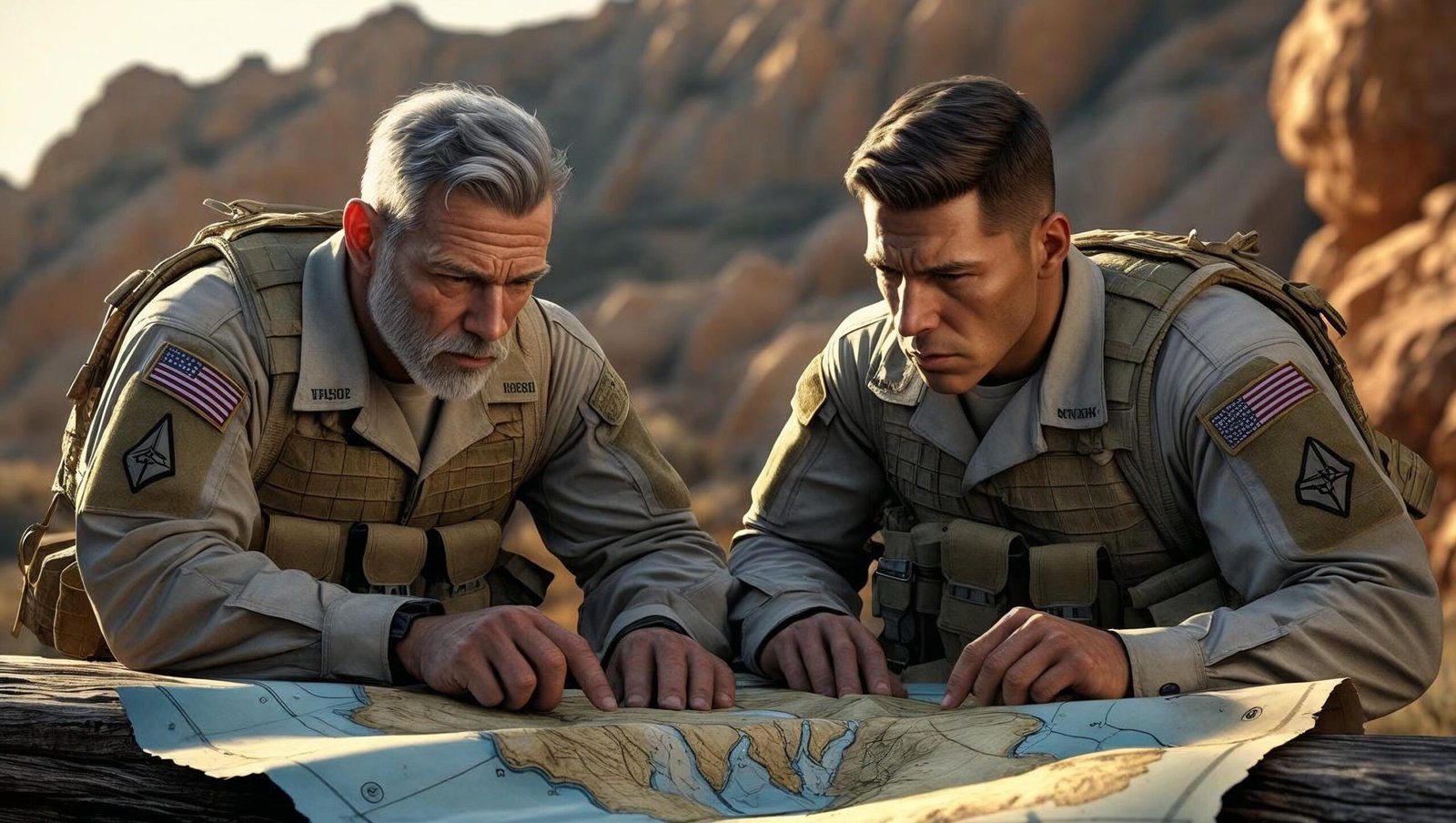Extreme Ownership: A Comprehensive Review of Leadership Principles by Jocko Willink and Leif Babin
Introduction
Leadership is not about rank, privilege, or title. It is about taking full responsibility for everything within your sphere of influence. This fundamental concept is the cornerstone of the transformative leadership philosophy introduced by retired U.S. Navy SEAL officers Jocko Willink and Leif Babin in their 2015 book, Extreme Ownership. Drawing from intense frontline experiences during the Iraq War—particularly the Battle of Ramadi—the authors present combat-tested principles that apply not only to military operations but also to business, startups, education, and daily life.
In this review, we will delve into the mindset of complete accountability and ownership as the central theme. Whether you lead a team, run a company, or seek personal growth, embracing this leadership approach offers profound insights and practical value.

The Origin of Extreme Ownership
At its core, Extreme Ownership is about personal accountability. The term originated from a simple but powerful belief: a leader is responsible for everything that happens under their command. When a mission fails, there is no room for excuses. Instead, leaders must look in the mirror and ask what they could have done better. This absolute form of responsibility is what Willink and Babin call Extreme Ownership.
The authors recount how they led the most decorated special operations unit of the Iraq War. They share harrowing stories of friendly fire incidents, deadly ambushes, and missions gone wrong. From these, they extract universal lessons about planning, decision-making, communication, discipline, and execution.
Chapter-Wise Analysis and Key Takeaways
Let us now delve into the leadership principles laid out across the chapters of Extreme Ownership, reinforced with actionable takeaways.
1. Extreme Ownership
This chapter introduces the foundational principle: a leader owns everything in their world. There are no bad teams, only bad leaders. When a Navy SEAL operation went awry due to friendly fire, Willink took full responsibility before his commanders. This accountability transformed the morale and performance of his team.
Takeaway: Never blame others. Accept full responsibility. This earns respect, builds trust, and fosters unity.
Extreme Ownership in practice also means you evaluate your leadership actions even when things go well. It’s not just about cleaning up after a mistake; it’s about constantly seeking improvement. Willink emphasizes the need for leaders to anticipate potential pitfalls, evaluate their team’s capabilities, and foster a culture where problems are addressed before they escalate.
2. No Bad Teams, Only Bad Leaders
In a memorable story, two SEAL boat crews were racing. One crew kept losing. The leaders swapped places. Suddenly, the formerly underperforming team won every race. Why? Because leadership matters more than raw talent.
Takeaway: Leadership sets the tone. Great leaders bring out the best in their teams.
The transformation of a failing team into a top performer illustrates how essential belief, accountability, and motivation are. A leader who takes Extreme Ownership of results can shape behavior, instill discipline, and unify focus. Rather than accept mediocrity, they challenge assumptions and raise standards.
3. Believe
If a leader doesn’t believe in the mission, they cannot convince others. Doubt spreads like wildfire. Before leading, one must understand and internalize the purpose.
Takeaway: Leaders must seek clarity, question strategies respectfully, and then lead with conviction.
Belief is the cornerstone of commitment. When leaders doubt the purpose of their work or the efficacy of their plan, that doubt permeates every decision they make. Leaders who embrace Extreme Ownership go beyond superficial understanding—they ensure that their actions reflect a deep alignment with their mission and objectives.

4. Check the Ego
Ego clouds judgment. It makes leaders defensive, arrogant, and closed to feedback. Ego is often the root cause of failure in teams.
Takeaway: Stay humble. Listen to others. Admit mistakes. Constantly seek self-improvement.
In Extreme Ownership, ego is framed as the silent killer of team cohesion. An unchecked ego leads to communication breakdowns, internal competition, and decision paralysis. Practicing Extreme Ownership requires leaders to detach from their egos, embrace feedback as a growth opportunity, and always place the mission above personal pride.
5. Cover and Move
This military tactic refers to teamwork—one unit provides cover while the other moves. In the business context, it means departments must support each other instead of operating in silos.
Takeaway: Success is a team effort. Prioritize collaboration over competition.
Cover and Move embodies synergy. In organizations practicing Extreme Ownership, teams understand that internal success depends on mutual support. Silos dissolve, barriers are broken, and departments become partners in shared objectives. Leaders model this behavior and reward cross-functional unity.
6. Simple
In high-stress environments, complexity leads to confusion. Plans and communication must be simple and clear.
Takeaway: Simplify objectives. Ensure everyone understands the mission.
Simplicity is clarity. Extreme Ownership stresses the power of simplifying communication, ensuring that the message is not only understood by the highest level but also actionable at the ground level. Complex strategies unravel in execution; simplicity ensures adaptability.
7. Prioritize and Execute
In combat, chaos reigns. Leaders must detach emotionally, assess priorities, and act decisively. This principle is invaluable in business and personal crises.
Takeaway: Focus on the most important task. Solve one problem at a time.
In Extreme Ownership, the principle of Prioritize and Execute is key during crisis management. Leaders must take a deep breath, detach from panic, identify the primary objective, and allocate resources accordingly. This disciplined approach is how teams overcome even the most complex challenges.

8. Decentralized Command
A leader cannot micromanage. Team members must understand the mission and be empowered to make decisions.
Takeaway: Delegate authority. Trust your team. Train them to think and lead.
This principle is crucial in scaling leadership. A leader who practices Extreme Ownership equips every subordinate to act in alignment with the mission. Empowered decision-making at lower levels allows the team to remain agile, responsive, and innovative.
9. Plan
Every mission begins with a detailed plan. It must account for contingencies and be communicated thoroughly to all levels.
Takeaway: Meticulous planning prevents missteps. Involve the team. Encourage feedback.
Planning under the Extreme Ownership framework is inclusive and proactive. Leaders solicit diverse input, anticipate obstacles, and develop contingency strategies. They also ensure every team member understands the plan’s “why,” enhancing buy-in and execution.
10. Leading Up and Down the Chain of Command
Leaders must both support their subordinates and communicate effectively with their own leaders. Mutual understanding is key.
Takeaway: Leadership flows in all directions. Bridge communication gaps.
This principle emphasizes that leaders are not just managing downwards. Practicing Extreme Ownership also means influencing upwards with respect, clarity, and initiative. Leaders provide their superiors with the right information to make better decisions while equipping their team with direction and support.
11. Decisiveness Amid Uncertainty
Hesitation can be fatal. Leaders must make the best possible decision with the available information.
Takeaway: Avoid paralysis by analysis. Act swiftly, adjust as needed.
The authors teach that even in moments of incomplete information, the act of decision-making can be the differentiator between success and failure. A hallmark of leaders practicing Extreme Ownership is their confidence in taking action while staying prepared to pivot if new data emerges.

12. Discipline Equals Freedom
A paradoxical truth. Discipline creates structure and consistency, which leads to increased freedom and flexibility.
Takeaway: Build habits. Embrace structure. Freedom lies on the other side of discipline.
Discipline is the hidden engine behind success. Leaders who embrace Extreme Ownership instill discipline not only in themselves but across their teams. Whether it’s adhering to timelines, maintaining quality standards, or practicing daily routines—discipline leads to predictable, replicable outcomes.
Psychological Impact of Extreme Ownership
The psychological strength required for Extreme Ownership is immense. Taking complete responsibility, even when it is easier to point fingers, builds a resilient mindset. The mental shift from victimhood to ownership boosts confidence, reduces stress, and strengthens decision-making capacity. Leaders trained in Extreme Ownership tend to approach challenges with calm and clarity.
Research in organizational psychology supports this principle. Accountability-driven cultures report higher performance metrics, better morale, and less attrition. Thus, Extreme Ownership not only creates better leaders but also better workplaces.
From a psychological standpoint, the practice of Extreme Ownership cultivates intrinsic motivation. When individuals take ownership of outcomes, they move beyond external validation and develop a stronger internal drive. This creates a self-sustaining loop of initiative, responsibility, and achievement.
Application in Civilian Life
While born in battle, the principles of Extreme Ownership are equally relevant to the corporate world, families, and personal development.
- Entrepreneurs who adopt Extreme Ownership build stronger startups. They own failures, pivot quickly, and foster high-trust teams.
- Managers who apply it reduce office politics, build loyalty, and create results-driven environments.
- Teachers who lead classrooms with accountability inspire disciplined, high-performing students.
- Parents who practice Extreme Ownership raise responsible, independent children.
Extreme Ownership also applies to personal goals. Individuals who adopt this mindset stop blaming circumstances. They accept control over their health, finances, relationships, and growth. From fitness to career advancement, Extreme Ownership empowers them to strategize, act, and adapt.
Ultimately, adopting Extreme Ownership as a life philosophy creates a ripple effect—transforming teams, relationships, and entire cultures.
Real-Life Business Examples
- Amazon: Jeff Bezos often emphasized customer-centricity and accountability. He insisted that leaders own customer outcomes.
- Toyota: Their continuous improvement (Kaizen) model includes owning mistakes and rapidly correcting them.
- Netflix: Their high-performance culture is rooted in individual responsibility.
- SpaceX: Elon Musk publicly takes responsibility for failures, reinforcing team morale.
- Google: Encourages decentralized command via OKRs—team members are empowered and held accountable.
Additional Reflections on Extreme Ownership
1. Extreme Ownership in Team Sports
Team sports exemplify the spirit of Extreme Ownership. When every player owns not only their role but also the team’s performance, success becomes inevitable. Captains and coaches who lead by example inspire trust and responsibility in others. Willink and Babin’s philosophy finds resonance in how teams communicate, adapt under pressure, and build cohesion through accountability.
2. Military Precision in Corporate Strategy
Military operations rely on clarity, simplicity, and decisiveness—key aspects of Extreme Ownership. In high-stakes corporate environments, these traits matter. Clear priorities, unified execution, and immediate correction when failures arise ensure sustainable performance. Willink and Babin’s background brings unique credibility to this military-corporate parallel.
3. Developing Ownership in Young Leaders
Extreme Ownership is not just for experienced professionals. Young leaders benefit by taking full accountability early in their careers. It builds character, fosters respect, and enhances growth. Empowering emerging professionals to embrace this concept prepares them for complex leadership roles down the line.
4. Extreme Ownership in Startups
In startup ecosystems, where chaos and uncertainty are constant, practicing Extreme Ownership can be transformative. Founders and team members alike thrive when everyone takes complete responsibility—over product quality, timelines, and customer experience. Ownership becomes a survival tool and competitive advantage.
5. Personal Growth through Extreme Ownership
Extreme Ownership isn’t limited to organizational dynamics; it deeply influences personal development. Owning one’s choices, behaviors, and reactions leads to stronger emotional intelligence. As Willink suggests, excuses evaporate when responsibility is total—and that opens the door to radical improvement.
6. How Extreme Ownership Fuels Innovation
Innovation flourishes in environments of psychological safety and self-leadership. When team members aren’t afraid of blame but instead own outcomes, creativity accelerates. Mistakes become lessons, not liabilities. The core of Extreme Ownership nurtures resilience and breakthroughs.
7. Remote Work & Distributed Teams
In remote or hybrid work settings, leadership is often diluted. Extreme Ownership becomes more essential than ever. When individuals proactively take control of communication, deliverables, and alignment, teams overcome distance-related barriers. This principle strengthens autonomy and reduces friction.
8. Long-Term Impact of Extreme Ownership
The long-term effects of practicing Extreme Ownership compound like interest. Leaders foster high-performing teams, reduce turnover, and build strong organizational culture. As accountability becomes habitual, mediocrity fades and excellence becomes the norm—across sectors, industries, and personal life.
9. Parenting with Extreme Ownership
Parenting presents daily challenges that mirror leadership. When parents apply Extreme Ownership—taking full responsibility for their children’s development, behavior, and habits—they model discipline and emotional control. This proactive mindset fosters a nurturing, resilient home environment where accountability is taught through action, not just instruction.
10. Education and Extreme Ownership
Educators who embrace Extreme Ownership inspire students by setting clear standards and owning both successes and setbacks. This principle transforms classrooms into high-trust environments where learners feel safe to take risks. Teachers who lead with integrity empower young minds to follow suit in academic and life challenges.
11. Conflict Resolution via Extreme Ownership
In both personal and professional relationships, conflicts often escalate when parties deflect blame. Practicing Extreme Ownership defuses tension by focusing on solutions. When each individual assumes responsibility for their contribution to the issue, empathy increases and resolution becomes faster and more constructive.
12. Emotional Resilience through Extreme Ownership
Extreme Ownership cultivates emotional resilience by shifting focus from circumstances to choices. Rather than reacting to external stressors, individuals develop inner control. Jocko Willink’s approach reinforces the idea that personal power stems from accepting total responsibility—this shift changes how setbacks are perceived and handled.

FAQs
Q1. What is the main message of Extreme Ownership?
A: The book emphasizes that leaders must take full responsibility for their team’s successes and failures, thereby empowering teams and improving outcomes.
Q2. Is Extreme Ownership only for military leaders?
A: No. The principles are universally applicable—in business, education, sports, and family life.
Q3. How does Extreme Ownership differ from regular accountability?
A: Extreme Ownership is radical. It doesn’t allow blaming others or circumstances. You own everything in your sphere.
Q4. Who should read this book?
A: Anyone in a leadership position, aspiring leaders, entrepreneurs, educators, or those seeking self-improvement.
Q5. Are the stories in the book real?
A: Yes. All anecdotes are drawn from the authors’ real-life combat experiences in Iraq.
Conclusion
The philosophy championed by Jocko Willink and Leif Babin goes far beyond a traditional leadership manual—it is a complete mindset transformation. They distill lessons forged in the most unforgiving environments and turn them into actionable principles that anyone can apply in daily life and professional settings. What sets this work apart is its unapologetic message: excuses have no place—only responsibility does.
The 12 core principles—ranging from “No Bad Teams, Only Bad Leaders” to “Discipline Equals Freedom”—are more than concepts; they are field-proven frameworks for cultivating resilient teams, removing blame, and generating results.
Embracing a culture of complete accountability can reshape one’s personal and professional journey. It develops emotional toughness, deepens relationships, and inspires others through disciplined example. In today’s world, where blame is frequent and responsibility is rare, this radical leadership ethos offers a path to meaningful, sustainable change.
If you’re ready to lead with discipline, integrity, and courage, this book offers the roadmap. The battlefield may vary—offices, homes, classrooms—but the mission remains the same: take responsibility, act with ownership, and drive transformation.
For more insightful book reviews, leadership wisdom, and personal growth strategies, visit:
shubhanshuinsights.com
“Responsibility is the seed. Ownership is the soil. Leadership is the fruit.”
Discover it all — only on shubhanshuinsights.com.